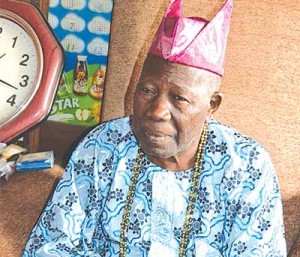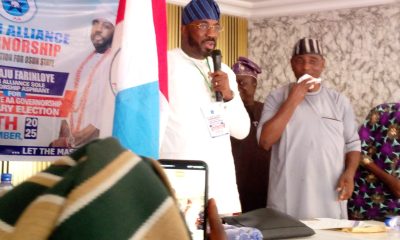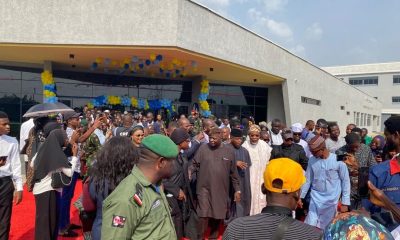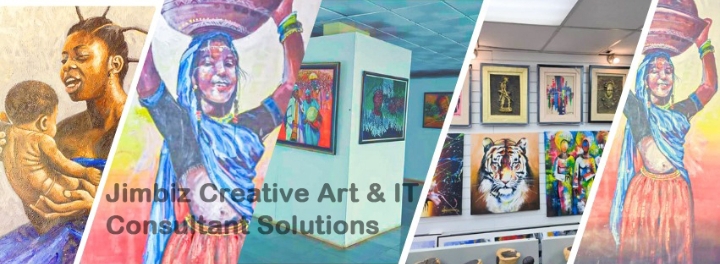News
Olubadan: one throne, many palaces

In quick succession, two topmost Ibadan high chiefs and Oba Samuel Odulana passed to the great beyond within three months, paving way for the Olubadan-in-waiting, High Chief Saliu Adetunji. BISI OLADELE writes on the unique Ibadan obaship system that makes access to the throne an all-comers affair and which creates many palaces across the city. The enthronement of a new Olubadan will add Chief Adetunji’s residence to the palatial league, just as this report also looks at the journey to a new N4 billion Olubadan’s palace which is in the works.

If a prophet had told High Chief Saliu Adetunji on November 5 last year that he would mount the throne of the Olubadan of Ibadan within four months, he would have treated the prophesy with disdain.
‘Four months? What will happen to the man on the throne and the two most senior high chiefs?’ He would have queried.
But when the erstwhile Balogun of Ibadan land, High Chief Sulaimon Omiyale, joined his ancestors on November 7 at the age of 91, and the late Otun Olubadan, High Chief Omowale Kuye, died on 19 of the same month at the age of 87, High Chief Adetunji must have revived his hope of ascending the throne as the 40th Olubadan.
Today, the sequence of deaths opened the gates for him to ascend the throne.
Unlike in other Yoruba towns, palaces are scattered across Ibadan, the Oyo State capital. They are artifacts that emanated from former great men who ruled the city across times and ages.
There is the Oba Ogundipe Palace. There is the Asanke Palace. There is the Adeyemo Palace and there is also the Odulana palace, among others.
They are visible, reminding indigenes and particularly, younger generations in the families, of their great ancestry.
Yet, sitting atop the Mapo Hill is the official palace for the throne. Located a few metres away from the historical Mapo Hall, the palace, was, however, only used by Oba Yesusfu Asanke during whose reign it was built in the 1980s. Before and after Oba Ashanke, monarchs in the city ruled their people from the comfort of their homes which they turned to the palace at coronation.
But the practice of using personal residence as the palace continued after Oba Asanke. All the affairs of the city are deliberated upon in the home-palaces with all members of the Olubadan-in-Council shifting their attendance to any current palace..
Most palaces are located in the remote communities within the city. They are common around Oja’ba, Oranyan, Irefin, Oke Are, Eleta and Agbadagbudu, except that of Oba Odulana, which was sited at Monatan, a newly developed area along Iwo Road. This was due largely to the fact that Oba Odulana was an elite. He was a Minister of Labour in the First Republic.
A member of the Olubadan-in-Council, High Chief Lekan Balogun, said the idea of ruling from one’s personal palace has no negative significance in Ibadan land. According to him, it only makes the job convenient for the reigning king.
Now that the city is preparing to enthrone a new Olubadan, it is certain that another palace will be added to the existing ones, that is, Chief Adetunji’s house in Popo Yemoja. Except the high chief decides to use any other house in an elitist area (if he has), his brown colour, two-storey building tucked in the heart of the densely populated hinterland, will serve as the new palace for the Ibadan monarch.
Yet, the situation may give way as elite indigenes of the city have launched a N4billion palace for their king. The elite, under the auspices of the Central Council of Ibadan Indigenes (CCII) launched the project two years ago.
The council’s former National President, Chief Bayo Oyero, explained that the palace complex sits on a six acre expanse of land atop the popular Agala hill at the centre of the town. The hill is adjacent the University College Hospital (UCH) in the city.
According to Oyero, the modern palace is a cluster of structures which will be part of what he called the “Olubadan Palace Complex.” The complex consists of social facilities, including a clinic, guest house, museum and a library, among others.
The community leader said the complex would be built in phases, stressing that the ongoing first phase costs at least N2 billion.
He sad: “It has been a major concern and major focus for CCII for a long time. Ibadan House, which serves as CCII office, was built on part of the piece of land earmarked for the Olubadan Complex. The cost runs into billions and we will build in phases. The first phase will cost about N2 billion. We have other facilities such as a church, a mosque, a swimming pool, police station and all conveniences – all within the palace complex.”
When completed, the palace will offer a clear and good view of the city as the hill is centrally located. It also borders a modern residential estate which grew on the hill in the early 1990s. The combination of all these features will make the palace perhaps the most modern in Nigeria.
The Olubadan throne
Accession to the throne of the Olubadan is as unique as the city. Unlike in other Yoruba towns where only few, specific ruling houses produce the king, the Olubadan throne is open to all Ibadan indigenes who are able to rise across the traditional ladder.
In the unique system, every compound nominates a distinguished son for the Mogaji chieftaincy title. Hence all compounds have at least, a Mogaji. Then, the Olubadan-in-Council, which is made up of the monarch and the high chiefs, can promote any Mogaji to Jagun. This promotion puts the man on the ladder to the Olubadan throne from two lines: Otun Olubadan and Balogun. Promotion to higher cadres occurs only when an occupant of any of the positions dies.
From the Jagun, candidates climb 21 steps before emerging as the Olubadan on the Otun Olubadan line, while candidates climb 22 other steps on the Balogun line.
This system accounts for the reason the throne is open to all indigenes and prevents unhealthy contest for the throne as the next Olubadan is already well known by virtue of their chieftaincy titles. Accession is rotated between the two lines. When an Olubadan dies, one of the topmost chiefs from both lines ascends the throne based on the principle of rotation. For instance, Oba Odulana ascended the throne from the Otun line. Hence, the new Balogun of Ibadan land, High Chief Adetunji, is his successor.
But the system also leaves the throne occupied by old men, most times, octogenarians and nonegerians, unlike in other Yoruba towns where young men stand a chance.
Interestingly, some top partisan politicians are currently close to the throne. They are the current Otun Olubadan of Ibadan, High Chief Lekan Balogun and The Osi Olubadan, High Chief Rashidi Ladoja.
While Balogun is a former senator and a chieftain of the Peoples Democratic Party (PDP), Ladoja is a former governor of the state and Leader of the Accord Party in Oyo State.
The Olubadan-in-the-waiting
Alhaji Saliu Akanmu Adetunji is a music producer and marketer. The high chief rose from being an apprentice tailor to owning a record label.
Adetunji, an octogenarian, is the proprietor of three music marketing companies – Omo Aje Sound Studio, Adetunji Label and Babalaje Record which he founded 55 years ago
He became Mogaji in 1976 and later rose to become Jagun Balogun (the first line on the Balogun rung) in 1978. He was promoted to the rank of Balogun of Ibadan land on January 1, only for the throne to become vacant 18 days later.
Adetunji discovered and promoted many popular Yoruba musicians, including Fuji maestro, Wasiu Ayinde (K1).
Before K1, Babalaje already had Salami Balogun, Alhaji Amoda Shijuade, Dauda Epo Akara, Saka Layigbade, and many more on his record label.
He was a tailor for many years, sewing both native and English dresses until the late Badejo Okunsanya patronised him at Agarawu area of Lagos. Okusanya had told him to call ‘alaaru’ (market load movers) to help carry the clothes he bought from young Adetunji. But to his surprise, he delivered it himself. Dazed by the gesture as his houseboy had always used ‘alaaru’ whenever he was sent on errand, he prayed for Adetunji: “whatever you lay your hands upon shall prosper.”
Okusanya was said to have later selected different old records for him to be playing at work so as to entertain his customers who came to sew, but to Adetunji’s surprise, the customers were buying the record from him.
In one of his interviews, Adetunji said: “I sold out everything and I took the money back to him and this was in 1960. Then he revealed to me that he and my dad started the business in 1940. So, he took me to other marketers who sold records. That was how I started till date.”
The steps
- Otun Olubadan/Balogun of Ibadabland
- Osi Olubadan/Otun Balogun
- Ashipa Olubadan/Osi Balogun
- Ekerin Olubadan/Ashipa Balogun
- Ekarun-un Olubadan/Ekerin Balogun
- Abese Olubadan/Ekarun-un Balogun
- Maye Olubadan/Abese Balogun
- Ekefa Olubadan/Maye Balogun
- Agbaakin Olubadan/Ekefa Balogun
- Aare Alaasa Olubadan/Agbaakin Balogun
- Ikolaba Olubadan/Aare Alasa Balogun
- Asaju Olubadan/Iklaba Balogun
- Ayingun Olubadan/Asaju Balogun
- Aare-Ago Olubadan/Ayingun Balogun
- Laguna Olubadan/Aare-Ago Balogun
- Oota Olubadan/Laguna Balogun
- Aregbe-Omo Olubadan/Oota Balogun
- Gbonkaa Olubadan/Aregbe-Omo Balogun
- Aare-Onibon Olubadan/Gbonkaa Balogun
- Bada Olubadan/Aare Onibon Balogun
- Ajia Olubadab/Bada Balogun
- Jagun Olubadan/Ajia Balogn
- Jagun Balogun (balogun line only).
Baales and Olubadans till date
- Lagelu (Date unknown)
- Baale Maye Okunade (1820-1830)
- Baale Oluyedun (1830-1835)
- Baale Lakanle (1836-1836)
- Basorun Oluyole (1836-1850)
- Baale Oderinlo Opeagbe (1850-1851)
- Baale Oyesile Olugbode (1851-1864)
- Basorun Ogunmola (1864-1867)
- Balogun Beyioku Akere 1 (1867-1869)
- Baale Orowusi (1869-1871)
- Aare Latoosa (1871-1885)
- Balogun Ajayi Osungbekun (1885-1893)
- Baale Fijabi 1 (1893-1895)
- Baale Osuntoki Olosun (1895-1897)
- Basorun Fajimi (1897-1902)
- Baale Masaderin (1902-1904)
- Baale Dada Opadere (1904-1907)
- Basorun Sunmonu Apanpa (1907-1910)
- Baale Akintayo Awanibaku Elenpe (1910-1912)
- Baale Irefin (1912-1914)
- Baale Shittu (1914-1925)
- Baale Oyewole Aiyejenku (1925-1930)
- Oba Okunola Abass Alesinloye (1930-1946)
- Oba Fagbinrin Akere 2 (1946-1946)
- Oba Oyetunde 1 (1946-1946)
- Oba Akintunde Bioku (1947-1948)
- Oba Fijabi 2 (1948-1952)
- Oba Memudu Alli-Iwo (1952-1952)
- Oba Igbintade Apete (1952-1955)
- Oba Isaac Babalola Akinyele (1955-1964)
- Oba Yesufu Kobiowu (1964-1964)
- Oba Salawu Akanbi Aminu (1965-1971)
- Oba Shittu Akintola Oyetunde 11 (1972-1976)
- Oba Gbadamosi Akanbi Adebimpe (1976-1977)
- Oba Daniel Akintayo Akinbiyi (1977-1982)
- Oba Yesufu Oloyede Asanke (1983-1993)
- Oba Emmanuel Adegboyega Adeyemo (1994-1999)
- Oba Dr Yinusa Bankole Ogundipe (1999-2007)
- Oba Dr Samuel Odulana Odugade 1 (2007-2016).
Source: The Nation
-

 News4 days ago
News4 days agoOsun 2026: Action Alliance Elects Farinloye As Governorship Candidate, Pledges People-Centred Governance
-

 News4 days ago
News4 days agoFRSC To Prosecute Peller After Crash
-

 News4 days ago
News4 days agoOsinbajo, Adeleke, Aregbesola Inaugurate N34bn UNIOSUN Medical Research And Training Hospital
-

 News4 days ago
News4 days agoMuftwang Sets To Defect To APC


